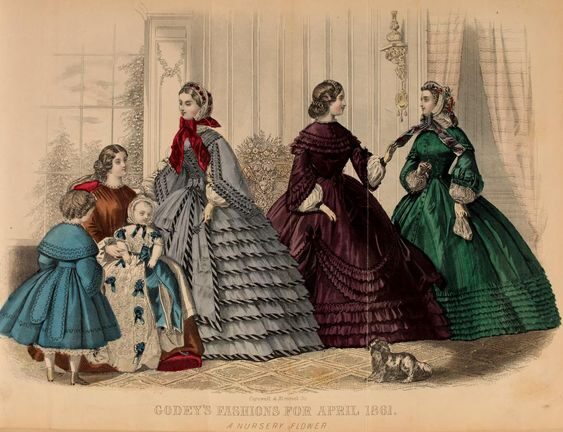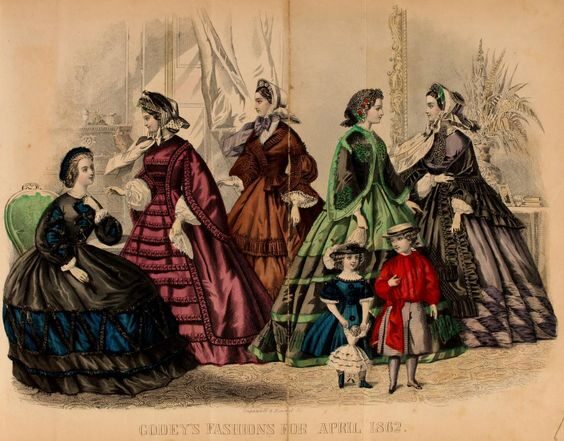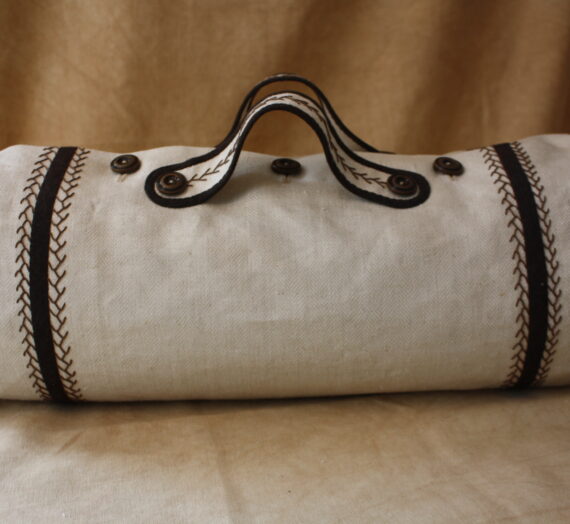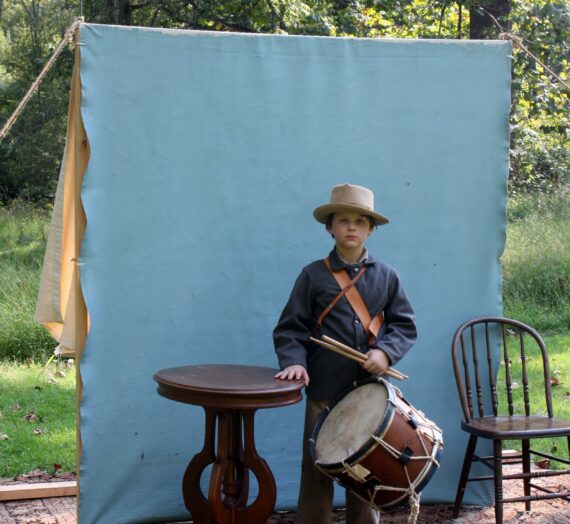Because silk fabric was expensive in the mid-Victorian era and many ladies’ garments were still mostly constructed by hand (which was a long and tedious process), only wealthy women could afford to have a trunk full of beautiful day and evening gowns. Those with a more sparse budget cleverly got around this problem by making one skirt and either two different style of bodices or one bodice with detachable long sleeves and capelet.
Such in the example of a garment in my own collection. The skirt is long missing, but the beautiful bodice is a reminder of the resourcefulness of many a Victorian lady. Worn with the capelet and sleeves, the dress would have been appropriate for day wear. Remove the two, and the bateau neckline, short sleeves and back fastening bodice would have made the owner of this dress look beautiful at any dinner party. Of course, I love this idea so much, that I decided to re-create this look.
Here is a picture of the original in my collection

The ensemble is made from silk and is trimmed with green silk fringe.
Without the Capelet

The “bateau” style bodice fastens in the back with hooks and eyes and is gathered in the front.
The pagoda sleeves would be whip-stitched to the inside of the arm opening for easy removal.
Bodice: front

Close-up of front gathering: detail of piping at bottom edge of bodice:

Detail of inside front of bodice bottom:

Inside view of bodice:

Bodice back:

Close-up of the back detail. Chain stitch gives the illusion of a 3-piece back, which in turn gives the illusion of a narrow waist:

Inside view of bodice:

The Capelet: front

Capelet: back

Pagoda Sleeves

Inside detail of pagoda sleeve:

Here is my version of the bodice, capelet and pagoda sleeves made from silk taffeta.

Bodice front:

Close up of front gathering and piping:

Pagoda sleeves:

Pictures of dress on a form:












Carmen
Hello,
I am currently doing the research for making a dress which is quite similar to this one without the cape and the pagoda sleeves. Concerning the construction I have it planned out, but I don’t know, where I should use which kind of seam (I will handstitch it). I have made some research in ye modern web, but couldn’t find instructions or mentions of it. Could you tell me, which ones you used on your bodice?
SewDecadesAgo
Hello Carmen. For historic construction I usually use the backstitch, which is what was used originally. It is a strong stitch which will hold up nicely to an area like the arm/sleeve area. I make my piping first, then sew it into the armhole of the bodice, then I sew in the sleeve. I’m assuming this is what you by kind of seam?